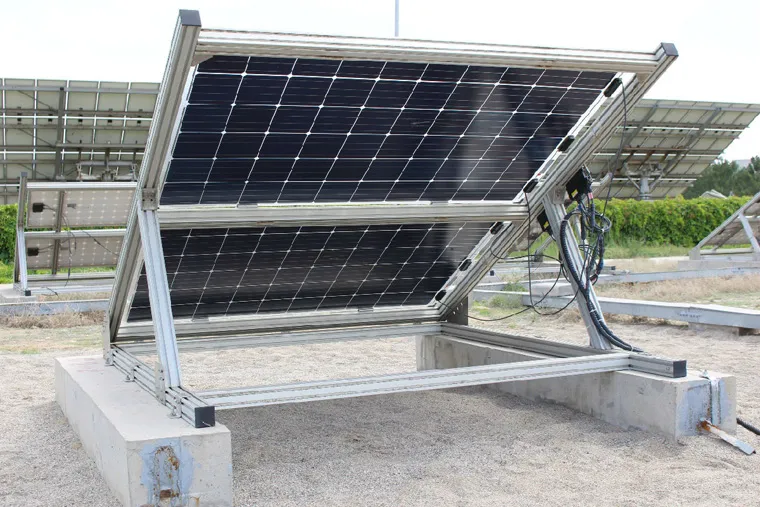Exploring the Advantages of Bifacial Solar Panels: A Comprehensive Guide
As the quest for efficient and sustainable energy solutions intensifies, solar technology continues to evolve, offering innovative options that enhance performance and maximize energy generation. Among these advancements, bifacial solar panels and bifacial modules are making significant strides, offering a promising alternative to traditional monofacial panels. If you're considering upgrading your solar system or investing in solar energy, understanding the benefits of bifacial panels can help you make an informed decision.

What Are Bifacial Solar Panels and Modules?
Bifacial solar panels are an advanced technology designed to capture sunlight from both sides of the panel. Unlike traditional monofacial panels that only collect solar energy from the front, bifacial panels harness light reflected off the ground or surrounding surfaces, effectively increasing their energy output. This dual-faced design allows for greater efficiency and higher energy yields, making them an attractive option for both residential and commercial solar installations.
Bifacial modules, essentially the same as bifacial panels, are a critical component of this technology. They refer to the complete solar panel assembly that features bifacial technology. These modules are constructed to take advantage of sunlight from both sides, ensuring that every possible photon is utilized to generate electricity. The result is a significant boost in overall energy production compared to monofacial panels.
How Bifacial Panels and Modules Work
The primary advantage of bifacial panels and bifacial modules lies in their ability to absorb additional light. The rear side of these panels is equipped with a transparent backsheet or a glass layer that allows light to pass through and be captured. This design takes advantage of diffuse light and albedo (reflective light) from the environment, which can be particularly beneficial in snowy regions or areas with highly reflective surfaces. The result is a substantial increase in overall energy production compared to monofacial panels.
Bifacial vs. Monofacial: Key Differences
When comparing bifacial panels and monofacial panels, several factors come into play:
Energy Efficiency: Bifacial solar panels can achieve up to 20% more energy output than monofacial panels due to their dual-sided light absorption capability. This increased efficiency translates to more power generation from the same amount of space, making them ideal for installations where maximizing energy output is a priority.
Installation Environment: The performance of bifacial panels and bifacial modules is highly dependent on the installation environment. They perform best in locations with reflective surfaces, such as white or light-colored rooftops, and on installations with elevated mounting systems that allow for increased light reflection on the rear side.
Cost and Investment: ที่ bifacial solar panel price tends to be higher than that of traditional monofacial panels. However, the increased energy yield can offset this initial cost over time, offering a higher return on investment. It’s important to evaluate the potential long-term savings and benefits when considering the upfront cost.
Durability and Lifespan: Bifacial modules often come with robust designs and materials that contribute to their durability. Many are built with tempered glass on both sides, providing extra protection against environmental factors and enhancing their lifespan.
Cost Considerations: Bifacial Solar Panel Price
ที่ bifacial solar panel price is generally higher than that of monofacial panels due to their advanced technology and additional manufacturing processes. Prices can vary depending on the brand, efficiency, and installation requirements. While the initial investment might be significant, the increased energy output and long-term benefits can provide substantial savings over time. It’s advisable to consult with a solar expert to get an accurate quote based on your specific needs and installation conditions.
Benefits of Bifacial Solar Panels and Modules
Enhanced Energy Production: By utilizing both sides of the panel to capture light, bifacial solar panels and bifacial modules offer superior energy production, which can lead to higher electricity savings and a quicker return on investment.
Long-Term Savings: Although the initial cost is higher, the increased energy yield can reduce your overall energy costs significantly, making bifacial panels a cost-effective choice in the long run.
Sustainability: Bifacial panels contribute to a more efficient use of space and resources, aligning with sustainable energy practices and supporting environmental goals.
Versatility: These panels are adaptable to various installation scenarios, including ground-mounted systems and rooftop installations, providing flexibility in design and application.
As solar technology advances, bifacial solar panels and bifacial modules represent a significant leap forward in harnessing solar energy more effectively. Their ability to capture sunlight from both sides offers enhanced efficiency and greater energy production, making them a compelling choice for those looking to maximize their solar investment.
If you’re considering upgrading your solar system or investing in new solar technology, explore the benefits of bifacial panels and evaluate how they can meet your energy needs. Consult with a solar professional to determine if bifacial modules are the right fit for your property and to get detailed information on bifacial solar panel prices and installation options. Embrace the future of solar energy with bifacial panels and enjoy the benefits of cutting-edge technology and increased energy efficiency.
-
String Solar Inverter: The High-Efficiency Solution for Smart Solar Energyข่าวJul.14,2025
-
Revolutionizing Rooftop Energy with the Power of the Micro Solar Inverterข่าวJul.14,2025
-
Power Independence with Smart Off Grid Solar Inverter Solutionsข่าวJul.14,2025
-
On Grid Solar Inverter: Powering the Future with Smart Grid Integrationข่าวJul.14,2025
-
Monocrystalline Solar Panels: High-Efficiency Power for the Future of Clean Energyข่าวJul.14,2025
-
Bifacial Solar Panel: A Smarter Investment for Next-Generation Energy Systemsข่าวJul.14,2025







